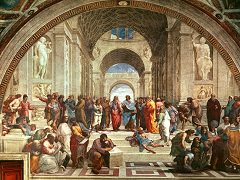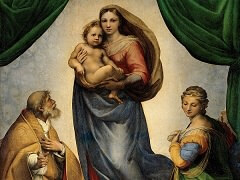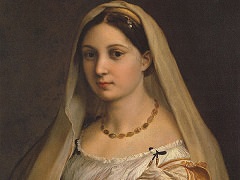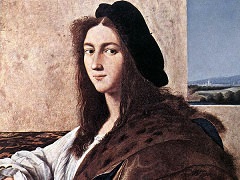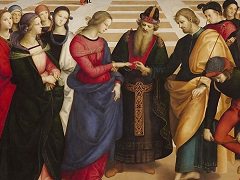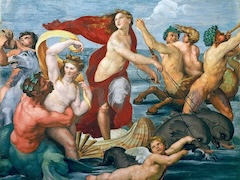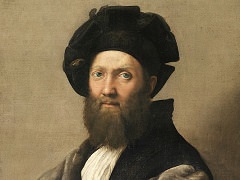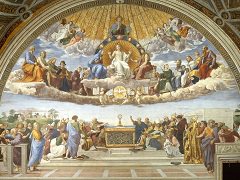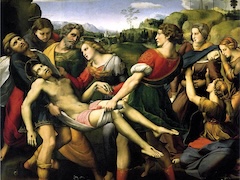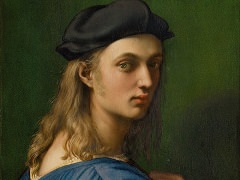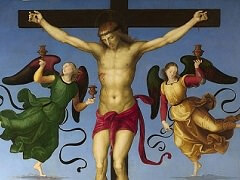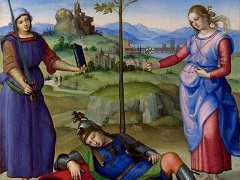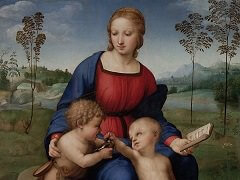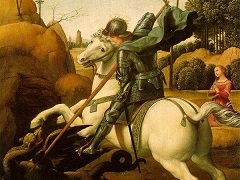The Transfiguration - by Raphael
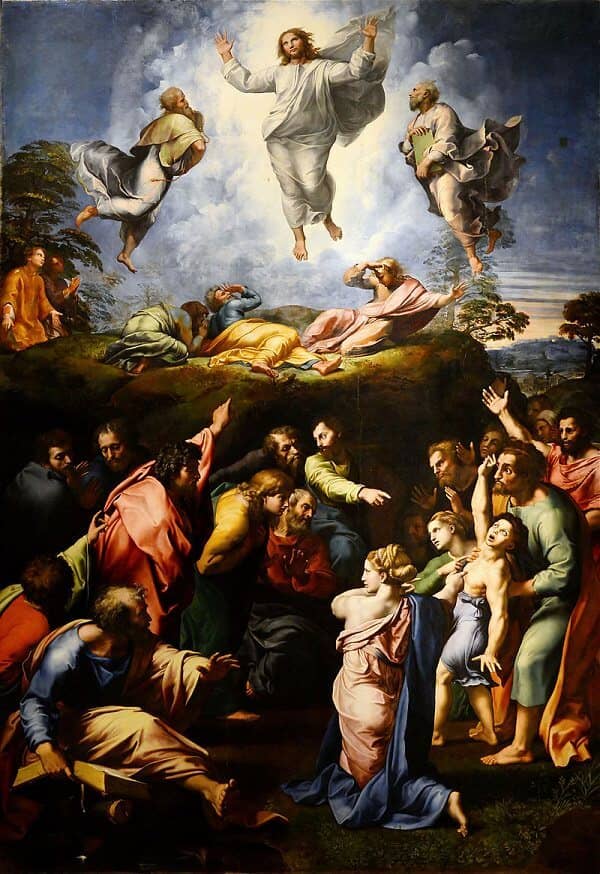
The composition of The Transfiguration is divided into two distinct parts: the Miracle of the Possessed Boy on a lower level; and the Transfiguration of Christ on Mount Tabor, in the background. The transfigured Christ floats in an aura of light and clouds above the hill, accompanied by Moses and Elijah. Below, on the ground, are his disciples. Some are dazzled by the light of glory, others are in prayer. The gestures of the crowd beholding at the miracle link the two parts together: the raised hands of the crowd converge toward the figure of Christ.
In this very grand composition Raphael has summed up all the elements present in the best of contemporary painting. Light and its effects are a dominant pictorial theme of The Transfiguration. Its blinding force overwhelms Peter, James, and John on the mountaintop, but a second light picks out heads and hands, a gesture or a bit of garment, from deep black recesses. The Transfiguration, with its exceptional and complicated light, was for Caravaggio and his enormous following in the seventeenth century what Michelangelo's Doni Tondo and Leonardo's The Battle of Anghiari had been for sixteenth-century painters.

